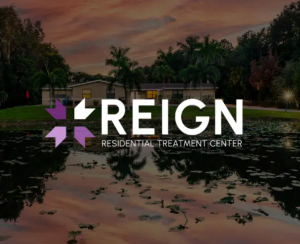Gender affirming surgery is a term used to describe surgeries used by trans people and gender non-conforming individuals to align their bodies with their gender identity. Gender affirming surgery is also known as gender confirmation surgery, gender alignment surgery, gender reassignment surgery, and sex-change surgery.
Though sex-change surgery and gender reassignments are common terms, most individuals do not prefer using these terms. Some people argue that gender reassignment implies changing someone’s gender while undergoing such surgery is to align the body to the individual’s gender. On the other hand, these individuals feel as if sex-change surgery term as a slur. Therefore, each individual has their preferred choice of the term as far as gender-affirming surgery is concerned.
Interest and Access of Gender Affirming Surgery
While some transgender, non-binary, and genderqueer people prefer these surgeries to align their bodies to their genders, some are contented with medical and social transitioning only. Some would like to undergo one or more surgeries though they may or never access them. A national survey on transgender people discovered that:
- 51% of trans women either had or wanted breast augmentation
- 38% of trans women have had a tracheal shave
- 22% of trans men had or wanted phalloplasty
- 66% of trans women had or wished for vaginoplasty or labiaplasty
- 50% of trans women had or wanted facial feminization
- 58% of trans women had or wanted orchiectomy
- 71% of trans men had or wanted a hysterectomy
- 27% of trans men either had or wanted metoidioplasty
Most trans people would like to undergo gender aligning surgery; however, cost remains an issue. For decades, these surgeries have not been covered by either public or private insurance companies. However, recently this seems to be changing.
Some private and public insurance are now covering either some or all procedures regarding gender-affirming surgeries. However, these coverages come with numerous challenges and are not accessed by all people in the states.
Another challenge in accessing these surgeries is the lack of qualified doctors to perform them. Doctors trained and qualified to perform these surgeries are mostly booked out for months or years in advance. Additionally, most of these doctors do not accept insurance.
Luckily, there has been an increase in physicians willing to train due to the insurance coverage increase for gender-affirming surgeries. There are lots of hospitals in the U.S. that perform vaginoplasty and also accept insurance.
Stigma and prejudice are yet other reasons hindering access to gender-affirming surgeries.
Looking to find a suitable surgeon near you? Search our worldwide gender confirmation resources database and find the right surgeon that can assist you during your gender journey.
Gender Affirming Surgery – Insurance Companies and the WPATH Standards of Care
Different individuals may be interested in different kinds of gender-affirming surgeries. There are different guidelines for coverage for each surgery. Most insurers consult the WPATH Standards of Care for recommendations for eligibility for specific surgery coverage. These standards are also known as the WPATH criteria or WPATH requirements.
WPATH Standards of Care for Transmasculine or Transfeminine
- Continuous, well-documented gender dysphoria
- The ability to give consent to treatment
- In case of any medical or mental health conditions, they must be well controlled
Remember that gender-affirming surgeries do not require hormone therapy. However, trans women are recommended to have had a year of hormone therapy to get the maximum possible breast growth without surgery. This also enhances surgery outcomes.
For trans men, there is no hormone recommendation or requirement. Reason being that most transmasculine individuals only experience dysphoria regarding their chest and may not need testosterone treatment.
Gender Affirming Surgery – WPATH Criteria for Ovariectomy, Orchiectomy, and Hysterectomy,
- Continuous, well-documented gender dysphoria
- Any health problem must be well controlled
- The ability to give consent to treatment
- Unless there are reasons for not taking hormones, the patient should provide proof for at least 12 continuous months of hormone therapy.
Surgeries for removal of gonads and uterus can be performed separately or alongside other gender-affirming surgeries. Gonads removal on its own has the benefit of decreasing the amount of cross-sex hormone therapy.
Before the removal of the uterus or cervix, screening of these organs is needed. However, screening procedures may cause dysphoria and discomfort in most trans men.
WPATH Standards of Care for Phalloplasty and Metoidioplasty
- Well documented persistent gender dysphoria
- 12 continuous months of hormone therapy
- The ability to give informed consent for treatment
- Any major medical condition must be well controlled
- Proof of 12 months of living in gender roles that align with your gender identity
These procedures are done to create genitals that align with one’s gender identity. Proof of a year living in gender roles conforming with one’s gender identity is required to determine whether they must undergo the irreversible, difficult, and expensive procedure.
Due to the physical and emotional effects of these surgeries, patients are urged to have regular visits to mental or medical professionals. The aftermath of these procedures may be emotional and difficult, and one may require support from health professionals and family members.
Standard Care for Facial Feminization Surgery
There are no formalities for facial feminization surgery. This procedure has been difficult to be covered by insurance since there is no research on its benefit in one’s life. However, some have been covered after arguing that genital surgeries will help improve their lives.
Documents Required
To meet these criteria, you need a letter from a mental health professional citing if you have experienced gender dysphoria and for how long. The letter should also indicate how long you’ve been working with that doctor. Also needed documents on whether you have other underlying medical problems and how they are controlled.
Insurance coverage is vital in gender-affirming surgeries, especially since they are expensive. Whether you are using insurance or cash, researching the best health facility specializing in your choice procedures is paramount.















